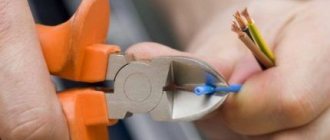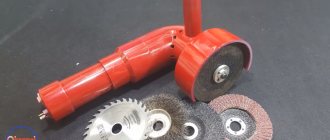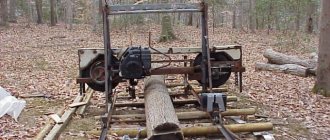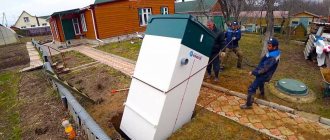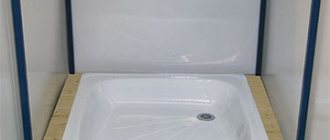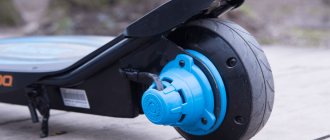The nuances of stripping insulation
When choosing a method for removing the insulating coating, it is necessary to take into account its features. Insulation can be single plastic or multilayer. Resins, fabrics, and non-flammable dielectrics are used as the latter.
The procedure involves the use of sharp instruments. They can damage the wire, damage the insulation where it is not needed, and narrow the cross-section. If you use a tool ineptly, you cannot avoid injury.
The weakest point of the wiring is the end of the cable that has been stripped of insulation. If the core becomes less strong or its cross-section decreases, its original characteristics will deteriorate.
To reduce all risks to a minimum, special tools and techniques for working with them have been developed.
How to clean cable insulation: several effective ways
Several methods are used to remove the insulating coating:
- manual stripping;
- burning;
- use of special equipment.
Manual stripping involves using a knife (a regular stationery or construction knife will do) or a hammer. The principle of operation is quite simple: you need to carefully cut the insulation along the core, take it to the side and trim it. This method, which allows you to clean the wire, is a rather labor-intensive process and requires skills and experience. And its use is rational if the volume of scrap metal is small. Otherwise, reflow will be the best alternative.
Firing is a fairly effective method to quickly remove insulation from copper or aluminum wire. However, when working, you should strictly adhere to safety precautions. Reflow must be carried out outdoors or in well-ventilated areas, since toxins are released when the winding is heated. The wire is laid on a horizontal surface and passed along the insulation with a soldering iron. After melting, it can be easily removed using ordinary pliers
It is important to remember that this technique, in addition to the advantages of saving time, also has its disadvantages, namely a negative impact on the environment and human health. In addition, it is not recommended to burn thin-stranded wires, since the metal burns out along with the insulation. One of the most effective and safest ways to quickly clean a cable is to use tools such as a side cutter or stripper.
They allow you to significantly speed up work and are suitable for cleaning large quantities of scrap. A side cutter is a special wire cutter for cutting wires. The free end of the cable is clamped between the blades and gently pulled. The cutting edges should be directed strictly in the direction of movement of the tool, which allows you to remove the winding without much effort. If used incorrectly, the lead may break off along with the insulation.
One of the most effective and safest ways to quickly clean cables is to use tools such as a side cutter or stripper. They allow you to significantly speed up work and are suitable for cleaning large quantities of scrap. A side cutter is a special wire cutter for cutting wires. The free end of the cable is clamped between the blades and gently pulled. The cutting edges should be directed strictly in the direction of movement of the tool, which allows you to remove the winding without much effort. If used incorrectly, the lead may break off along with the insulation.
A stripper will help automate and significantly speed up the process. To clean the wire for non-ferrous metal, you need to insert the end of the cable into a special hole, hold the handles of the stripper to cut through the winding, and pull the conductor out, thereby freeing it from the insulation. The advantages of the tool are ease of operation and the ability to clean both thick- and thin-core wires.
To clean large quantities of scrap metal, special equipment is also used, which is rented out by the collection points themselves.
1.Knife
The insulation is cut with a sharp knife towards the end of the wire in a motion similar to that performed when sharpening pencils. Such cuts must be made twice on opposite sides of the wire.
Second option: the insulation is cut along the axis, turned to the side and the excess part is cut off, Figure 1. You can use a special knife for this.
The most accurate stripping is achieved by cutting the insulation in a circular motion with the knife oriented perpendicular to the axis of the wire being stripped, after which it is pulled off with the blade moving towards the end of the wire or simply removed with your fingers.
The method is applicable to both wires and the entire cable, from which the protective sheath is removed.
Figure 1. Stripping the wire with a special knife
Figure 1. Stripping the wire with a special knife
Please turn JavaScript on and reload the page.
Plinths are one of the main components of any telephone network, the base for which is autonomous telephone exchanges, further referred to as PBXs. This device is an important switching element that provides the necessary communication between a modern PBX and various subscribers of the telephone network. Plinth 10 acts as a kind of router and is used to facilitate cross-connection of subscribers. Quite often a situation arises when you need to transfer the number of a certain subscriber from one room to any other. If the installation of telephone networks was carried out without the use of plinths or special cross-connecting lines, then it would be necessary to route the telephone directly to the employee’s new place of work when changing offices. In such a case, you simply cannot do without telephone plinths.
Difference between wire and cable
When describing electrical wiring, the term “wire” or “cable” is often used as a conductor of current. To a person uninitiated in the intricacies of electrics, it may seem that this is one product. In fact, they are different.
A wire in the traditional sense is a cord with a small cross-section. Such a conductor can be single or multi-core. It may not have insulation at all, or if it does, it is light in the form of a tube. Removing it is not difficult at all.
The cable consists of a certain number of current carriers. They are connected into one unit, but do not touch each other and are enclosed in a shell made of a special material.
For a single-core wire, the cross-section is determined by one core; for a multi-core wire, the cross-sectional area is determined by the sum of the cross-sections of all cores. To improve the performance properties of the cable, a nylon thread is introduced into the middle.
Any conductor should be handled with care, especially aluminum conductors. Compared to copper, they are more fragile. Bending loads reduce the already small margin of safety of aluminum cores.
Some characteristics for comparison:
- density of aluminum - 2.7, copper - 8.9 t/mᶾ;
- multi-wire design is excluded for aluminum, but possible for copper;
- resistivity of aluminum is 0.0294, copper - 0.0175 Ohm x mm²/m.
Damage during stripping of aluminum cores further reduces their performance.
You can read more about the types of cables and wires in this material.
Features of working with machines for armored cables
Armored cable is a universal conductor of electric current. Unlike simple insulated wires, the metal braiding of the conductor gives it special strength and creates reliable protection from external negative factors.
The armor is a two-layer spiral shell made of steel tape. The cross-sectional structure of the armored cable is shown in the lower figure.
Cross section of armored cable
Removing metal tape requires a powerful power unit and durable, sharp disc blades. Industrial machines are equipped with cutting units that can clean several armored cables of different diameters at once. This is due to the need to process large quantities of wire products per work shift.
Note! Passing through the cutting block, the knife cleans the cable from the surface polymer or rubber hose, electrically conductive screen (armor) and PVC belt insulation. Only factory-made machines can remove metal insulation
They are large units. After the armor is removed, as a rule, three insulated cores are obtained. They are cut on the same machine, placing them in other openings of the cutting block
Only factory-made machines can remove metal insulation. They are large units. After the armor is removed, as a rule, three insulated cores are obtained. They are cut on the same machine, placing them in other openings of the cutting block.
Stripper for cutting armored cable
Recycling collection points
Scrap acceptors purchase the following waste cable and wire products:
a) manufacturing defects, warehouse surplus;
b) used cable lines, production remains;
c) old uncleaned cable;
d) dismantled communications;
e) installation waste.
Acceptance is carried out according to several criteria, which determine the price per kg of scrap. The length of the conductor pieces, the percentage of scrap to insulation, and foreign impurities are taken into account.
It is recommended to hand over recyclable materials to collection points that have documents and permits to conduct this type of activity. Before weighing, the scrap is inspected and assessed by specialists.
By the way! To determine the weight of the metal without winding, the acceptance specialist cuts off a prototype conductor, strips it and weighs it.
How to clean aluminum wire
It's no secret that selling non-ferrous metals is a very profitable and profitable business. And this is not surprising, since every year resource reserves are becoming thinner, and prices, accordingly, are rising rapidly. However, finding scrap metal suitable for delivery to collection points is becoming more and more difficult every year. One source of non-ferrous metals is power cables. They contain valuable materials such as copper, aluminum, lead, etc. How to clean the wires and prepare scrap for further delivery to collection points? We will talk about this in our article.
Types of insulating materials
There are single and double insulation.
The best option is cables equipped with double insulation. If you plan to place the wire in grooves, it is permissible to use single insulation
For its production, various insulating materials are used:
- Plastics based on organic compounds. These are mainly thermal plastics that soften when heated. When burned, these plastics release various toxins into the environment.
- Thermosetting plastics. They become harder when heated. Insulation made from them is used only in special cases when the requirements for it are increased.
- Natural or artificial rubber of different types. It hardens when heated and supports combustion.
- Fabric based insulation. Withstands a fairly high degree of heating (maximum 400⁰) while maintaining insulating properties.
- Shielding braid. This is not insulation in the literal sense, since the braid does not act as insulation, but it provides protection against mechanical damage.
- Armor braid. Also serves as protection against damage
The choice of tools for removing insulation depends on the material from which it is made.
Stripping fluoroplastic insulation
PTFE insulation is a chemically produced polymer. Has a number of positive properties. For example, it does not get wet in water and is highly resistant to various organic substances. Its parameters allow it to be resistant to temperatures up to 300 °C. It is an ideal electrical dielectric. However, there is one main drawback - cost. It is precisely because of its high price that it is used only in exceptional cases. In everyday conditions, radio amateurs fell in love with it, because. after soldering, it has an aesthetic appearance, does not melt, and takes up little space.
The fluoroplastic itself appears in the form of a narrow thin strip, which is tightly wound around a stranded core. The fluoroplastic version can only be removed with a knife. It is scraped down to the length you need. After it is exposed, the shell is taken aside and the remains are cut off.
Please pay attention! Fabric or rubber insulation can be removed using any of the methods described above. The main task is to prevent cuts in the main core.
Electrician's knife
Without further ado, take an ordinary knife. While pressing the wire with the index finger of your left hand (it is better to do this on a table), press the knife into the surface of the insulation. Now make a full turn of the wire by twisting it with your finger and pull off what you cut off. Everything is simple, except for the risk of damage to the contact. And this is an undesirable marriage in work and problems in the future.
Important! To make this operation easier, you need a special electrician’s knife with a curved blade. In addition, the handle must be made of a material that is not a current conductor.
Methods for cleaning cables for scrapping
Electrical scrap is purchased at a higher price at collection points if it is first cleared of insulation and other debris. The design of the outer sheath often includes dense materials and even a layer of lead, so a simple knife does not always make it possible to clean the cable. The procedure is performed to increase the value of scrap metal. To get maximum profit, you need to contact a qualified company. Our locations accept scrap cables on favorable terms. We will provide high prices, bonuses for wholesale customers, as well as metal removal services using our own transport.
The principle of stripping wires from insulation
Wire stripping
Professional tools use two principles for removing protective coating from cables:
- Break. This method can be compared to stripping wires with teeth, when a piece of insulation, clamped between the teeth, is torn off from the rest of the coating layer with a force directed along the conductor.
- Cutting. In this case, the cutting edge cuts through the protective layer in a circle, without damaging the current-carrying core. Then, part of the cut tube is removed from the conductor with little effort.
Professional tools for stripping wires are:
- Manual.
- Semi-automatic.
- Automatic.
To work with a small number of wires at home, you can use simple methods for stripping their ends.
Simple ways to strip wires
Stripping cable ends can be done in two ways:
Thermal influence. This involves heating the core to the melting temperature of the insulation. This is done:
- Melting the PVC insulating layer with a soldering iron, and then removing the coating with pliers. The big disadvantage is the presence of toxic fumes and corrosion on the soldering iron tip.
- A lighter.
- Heated nichrome thread.
Removing insulation using thermal method
Such techniques are best used for thin, low-power conductors, which are used in electronics, communication devices, and audio equipment with stranded soft conductors operating in circuits where the voltage is approximately 5 volts.
Electrician's knife
Electricians often make their own knives. For this:
- Take a piece of a metal hacksaw blade with a small blade.
- They sharpen it on an emery machine to give the tool the shape of a sharp, thin wedge.
- The handle is made by tightly winding the wire, onto which several layers of electrical tape are applied.
This blade perfectly cuts off a layer of polyvinyl chloride, but incorrect handling of the knife can easily damage copper or aluminum metal located close to the insulation.
The video will show you how to quickly remove insulation from a copper wire at home.
How to strip a wire while maintaining its properties
Let's start with simple methods.
Knife
A universal tool is used: a regular pen or office tool.
Improving the use of knives, many electricians make homemade devices for stripping insulation. For example, you can use a safety razor blade by simply screwing it to a clothespin.
Using holes of different diameters (on a clothespin), you get a universal tool for removing both the outer sheath and the coating directly on the conductors.
The simplest factory-made insulation stripping pliers work on this principle. The outer sheath is removed using calibrated holes, and conductors of small diameter are stripped using a blade with a molded hole.
Thermal method
If the question arises: how to quickly remove insulation from a wire, all means are good. Many craftsmen simply burn the ends of the conductors with a lighter or match. The method is not the best: Firstly, the cable may catch fire. Secondly, the remaining part of the shell loses its properties at a distance of 1–2 cm from the cleaned area. And finally, the conductor itself (copper or aluminum) is destroyed by such thermal effects.
If you need to quickly strip the wire, but there are no cutting tools, you can use a soldering iron. The tip of the conductor is burned with a hot tip, after which the insulation is easily removed.
There are thermal tools of industrial design.
Stripping the wires of insulation is carried out as follows: the heating elements are pressed to the cut point, the sheath is melted with a short pulse, the conductor remains untouched. Such devices can be stand-alone or part of soldering stations.
Advantage of wire thermocouples:
- Heating occurs pointwise; the copper or aluminum core does not change its properties.
- A thin melt line does not lead to waste of material.
- A sealed ring is formed around the shell, preventing the penetration of moisture.
The only limitation is the insulation material. Thermal stripping is used only in cables with polyvinyl chloride insulation. The fluoroplastic or rubber shell can only be removed mechanically.
Mechanical devices for stripping industrial wires
The most popular electrician tool is the “Insulation Stripping Complex”, known by the abbreviation KSI.
The operating principle is as follows:
During the initial compression of the pliers, the conductor is clamped between the grooved jaws (as in pliers), the other end is captured by the knife mechanism. The cutting attachment is spring-loaded and does not cut through the shell to the metal. This way the current-carrying core is guaranteed to be preserved. Next, the working levers are separated, and the notched sheath is removed from the wire.
The length of the area to be stripped is set using a limiter, against which the front wire rests when inserted into the tool.
There are certain restrictions: the tip cannot be too long. If you need to clean a long area, the process is repeated several times. In this case, the wire does not rest against the limiter, and the shifted section of the sheath is removed manually.
The complex copes well with both mono conductors and multi-core cores. There are restrictions on the diameter of the wire: a cable with a cross-section of more than 4.0 is almost impossible to process.
The next tool is simpler. End pliers for stripping insulation.
Designed for a diameter of up to 6.0 squares; it is difficult to expose a thicker wire manually. Between the cutting tips there is a screw stop, with which the diameter of the conductor is set. The distance between the grips is chosen to be slightly larger than the diameter of the current-carrying conductor. This is done to reduce the risk of damaging the metal. After squeezing the handles, the sheath is removed with a sharp movement along the wire. Working with such a device is not as convenient as with a CSI, but this is justified by its low cost.
Nippers, or the cutting sector of pliers, work in a similar way. Only stripping the wire with their help requires some skill.
The following device is designed to work with large diameter cables. This is a complex knife with a grip.
It can be used to strip wires of any length. First, a transverse incision is made, then a longitudinal one.
After which the sheath is easily removed without damaging the central conductor.
Stripping varnish-coated conductors
Such a conductor is used in transformer windings. Instead of a dielectric sheath, a thin varnish coating is applied to the copper core. The conductor is cleaned with a knife or sandpaper.
3.Pliers
When working with pliers, there are two options. In the first case, the insulation is cut as deeply as possible with the sharp edges of loosely compressed jaws, as shown in Figure 3, and then pulled off the wire. Taking into account the weakening of the mechanical strength of the insulation, the break is quite neat and passes through the area of the cut.
In the second option, the insulation is lightly removed from the wire, the free end is clamped with sponges and pulled off the wire. It is advisable to do this with a sharp movement, which somewhat improves the quality of stripping.
Figure 3. Stripping the wire with pliers
Figure 3. Stripping the wire with pliers
How to strip wires correctly?
There are some nuances in this process, without knowing which you can make mistakes with irreversible consequences.
The stripped area should not protrude beyond the joint. If a bare wire is left exposed, a person may accidentally touch it and suffer an electrical shock.
The insulation from the core must be removed from all sides. Compressing the remaining insulation will reduce the reliability of the fastening.
When an error is made in the wiring of the vehicle, then under the influence of vibration, as a result of loosening of the fastening, the wire will fall out of the connection
Improper stripping will result in short circuits and even fire.
Which method is most effective?
All the methods we describe allow you to effectively strip the cable. Which method is right for you depends on several factors:
- Volume of scrap delivered. If the batch is small, then you can use a regular knife, stripper or side cutters.
- A tool that is available. If a person’s professional activity does not involve regularly removing windings from cables, then it is unlikely that he has a stripper or a knife with a heel. In this case, it is clear that you will have to use a regular knife.
- Skill. Removing the winding with a knife requires some care, so not everyone is able to remove the insulation without damaging the core. In this case, you can use a soldering iron.
It is clear that if the volume of scrap being delivered is large, then it is impossible to do without special automated equipment. Our company has been purchasing non-ferrous scrap metal of any type for a long time, strictly within the framework of current legislation. We accept any types of scrap and treat the presence of impurities adequately. Payment is possible immediately after weighing.
Puller
But pay close attention to the tool, which is called a manual wire stripper (puller). These universal devices make it possible to manually precisely adjust the diameter of the wires. Thus, you have full guarantee that the core will not be damaged when cutting the sheath.
The stripper is very easy to use: just fix the wire, scroll in the direction of the arrow once, and the job is done!
There are also industrial cleaners for cross-linked polyethylene, but they are quite expensive and not suitable for home use.
Popular methods of removing insulation
Practical skills play a big role in the process of stripping wire insulation. The main difficulties arise when working with thin wires, when every movement matters. Optimal pressure can only be achieved through practice.
The most commonly used methods for removing insulation are:
- using a knife;
- through side cutters;
- under the influence of high temperature;
- using a stripper.
Each option is preferable in specific circumstances.
Option No. 1 - using a knife to cut insulation
At home, a knife is most often used. When using this simple tool, it is important to choose the correct angle of the blade. The biggest mistake is cutting in a circle while keeping the cutting part perpendicular. In this case, it is difficult to avoid notching the core or breaking the secondary insulation.
If, when removing the braid from a wire with a cross-section of 0.6 to 0.8 mm, the core is damaged, then even with a slight bend it will break at this point
The correct position of the knife is when the tool and the wire axis are in the same plane. First, cut the braid along the conductor. Next, separate the insulation, take it to the side and finally cut it off at the base.
It is better to use a special electrician’s knife with a straight or curved blade to remove hard insulation from wires. The main thing is that there are no jagged or burrs on it. If the knife is folding, it must be equipped with a lock so that it does not fold spontaneously.
A good blade has a double-sided sharpening at a slight angle and an internal rounding of the cutting edge. Some versions of mechanic's knives have a special blade design - it is short and rounded inward, and there is a “heel” at the end. It limits the depth of cut, which is important if it is necessary to remove the top layer of insulation without damaging the sheath of individual cores.
Option No. 2 - side cutters for stripping insulation
Side cutters are a convenient and safe tool, but only if used correctly. What you need to pay attention to is the direction of the cutting edges and the force applied.
The tool is used in two ways:
- The sheath is cut from different sides, and then removed from the conductor. This method is suitable for working with wires with a large cross-section.
- The braid is fixed and cut through with the cutting edges of a side cutter, and then pulled to the side, making axial movements.
In any case, you need to act extremely carefully, otherwise the conductor will be either damaged or bitten off.
When working with a side cutter, you need to take into account that the sharpened side of the tool jaws must be oriented in the direction opposite to the vector of tightening of the braid
They also produce side cutters with notches for conductors of a certain diameter. This simplifies the use of the tool at home.
Following the recommendations will minimize the risk of biting the core. Also, proper use of the tool will free you from the use of large compressive forces.
Option No. 3 - thermochemical method of removal
With very thin conductors, with a cross-section of less than 0.2 mm, removing the insulation from an enamel wire or a wire with PVC insulation mechanically is a big risk. The thermochemical method is more suitable here.
In the first case, the technology is as follows:
- The wire is conveniently laid on a flat surface. Vinyl chloride insulation is placed under it.
- Heat up the soldering iron tip and carefully move it along the shell. When heated, it will disappear under the influence of the released chlorine.
There is another option for removing the enamel insulation from the cable. An aspirin tablet is placed on the wire, heated with a soldering iron and distributed along the entire length. Not only will the insulation be removed, but the wire will also be tinned.
PVC insulation is simply heated with a soldering iron or lighter, after which it is easily pulled off, because plastic loses density
Removing the braid by reflowing ensures the integrity of the conductor. The method works well on old wiring, since the winding here is hard and brittle.
Stripping the insulation of a thin enameled conductor can be done using fine sandpaper. Before removing the insulation layer from the wire, the sheet is bent in half so that the sandpaper is inside. Place the wire in the middle, lightly press it with your fingers and pull. Repeat the action until the enamel is completely cleansed.
Option No. 4 – stripping with a stripper
If the insulation stripping methods under consideration are manual, then some types of strippers allow this work to be partially mechanized. The tool most often consists of special pliers that work with a certain size of wires and cables.
Conventionally, strippers are divided into categories:
- miniature handheld;
- large rack;
- lever
The first ones look like clothespins. It has one or more holes in its spring-loaded jaws. There are small multifunctional strippers in a case-like form. The drop-down body has holes with knives for different sections of wires.
In addition, the device has a knife that cuts the braid longitudinally, a knife that works in the transverse direction or cuts circularly. They are also equipped with a retractable knife for stripping wires.
The next design is a stripper with levers. Visually, the tool is similar to scissors and includes:
- Knives with a wedge-shaped cut;
- Adjusting screw, with its help you set the desired cross-section.
The cable is secured with clamps, then the levers are pulled together and the insulation is removed instantly. The removal length is set manually. The main disadvantage is the need for adjustment when removing insulation from wires of different sections.
If you mistakenly insert a thick wire when setting the jaws to a smaller cross-section, the conductor will be damaged.
In the category of relatively cheap devices, there are also more advanced strippers. Their blades have holes for conductors
In addition to the main functions, most of these hand tools are used for crimping the ends of stranded wires, cutting wires, and cutting bolts. Sometimes they are used like simple pliers.
A tool with sockets in the blades, like the previous one, is universal. When working with it, you must not relax your attention so as not to place the current conductor in a hole that does not correspond to its cross-section.
These disadvantages are not typical for automatic lever strippers. The wire size is set automatically here. The spring-loaded working element begins to operate when the handles are compressed. You can remove not only the insulation from the core, but also the outer braiding from a round or flat wire.
Many models are equipped with a length limiter that allows you to remove the braid to a set length. The required limit is set once, and further withdrawals occur based on the set limit.
Automatic models, like manual ones, may have additional functionality - crimping tips, cutting, etc.
When choosing a stripper model, you need to proceed from where you plan to use it. For normal work at home, a simple hand tool will do.
There is a special stripper designed to remove insulation from a television cable. Its peculiarity is the presence of two cutting edges located at a certain distance. This ensures convenient installation of the F-connector later
When working with a lot of wires and cables, it is better to arm yourself with a semi-automatic or automatic device. This tool is essential for professional electrical installers.
There is an article on our website where we talked in detail about strippers for stripping insulation from wires. Follow the link to view the material.
How to Strip Insulation from a Round Cable
How and where to work with such a stripper, what methods and knives to remove insulation, and what are their advantages? One of the advantages is the ease of operation of Jokari inside switchboards, when all the cables are already routed inside and the distances between them and the switching equipment are minimal.
That is, there is no longer any free space for wide sweeping movements with a knife and hands. In addition, when you work in such conditions with the same knife with a heel, there is a risk that when the blade comes off the insulation of one cable, you can accidentally damage another, or hit the wall and equipment. And this again is a dent and sharpening.
Circular cut
The first method of removing insulation is a ring cut. For this purpose, self-adjusting blades are used at the end of the tool. The entire cable is placed inside the stripper, compressed with a slight force, and two or three turns around the axis are made, back and forth. A circular cut occurs in the outer shell.
If the stripper does not cut the insulation to the very end, this is especially true for cables with a more rigid VVGng sheath - this is normal. Rather than making a through cut, he makes a kind of notch. Otherwise, there would be a high risk of damaging the insulation of the internal cores.
This method is ideal for nym cables. I do not recommend using it for wires of a similar design of the PVS brand. With nym, all the cores inside the shell are centered, while with PVA they are twisted using a different technology. Therefore, they can be damaged by such a cut without calculating the compression force.
If a ring cut was made at the end of the cable, then, as a rule, the insulation can then be easily pulled off by hand. There is no need to drag it with closed blades when both halves of the tool are compressed. This reduces the life of the knife. It is better to bend the cable as much as possible and remove everything with your hands or pliers.
Longitudinal section
When the first method does not help, you can use a fang knife. Insert it into the cut you have already made, pass the cable through the upper window, make a slight slope of the knife in relation to the wire and stretch the puller to the end of the insulation.
This makes a longitudinal cut of the outer shell. It goes the same depth throughout and does not cut the vein anywhere. After these two cuts, any sheath, even a hard or slightly hardened cable, can be easily removed.
If you have a different brand of knife, without a hole in the body, you will have to hold the wires with two fingers, manually adjust the tilt and constantly monitor the compression force so as not to cut through the outer layer too much.
Security measures
A conductor stripped of insulation is potentially a source of danger. After processing the wire, especially in places where it is pressed and scored, the insulation resistance should be measured. This is done when putting the electrical installation into operation, then the frequency of measuring the electrical wiring insulation is carried out according to the approved schedule.
If there is damage that reduces the protective ability of the shell, it is necessary to cut off the damaged area or put a dielectric casing on it.
That's all we wanted to say about it. To fully understand the issue, we recommend watching the video.
4. Stripping pliers
The first type of specialized tool is made in the form of pliers, the jaws of which have several round holes with sharp edges, Figure 4. The holes are marked according to the diameter of the wires in mm or AWG units. To strip the wire, simply insert the wire into a hole suitable for the caliber of the wire, squeeze the handles and pull the tool away from you in the axial direction.
Figure 4. Universal stripping tool
Figure 4. Universal stripping tool
Note that such a tool is often used by fiber optic cable installers to remove protective tubes from fibers.
Forceps
There are many factory tools for removing braid. Assortment by price - from budget to exclusive. The usual one has two devices: the first one uses a gauge to remove the braid, and the other hole protects the copper wires.
Electrical wiring diagram in the garage - features of design and installation with your own hands. 120 photos of wiring examples and video instructions for replacing wiring in the garageWhich wire to use for grounding: calculation of parameters, marking and purpose of various types of wires (video instructions + 150 photos)
Power cable brand ASB - characteristics, classification and rating of the best manufacturers. 115 photos and video instructions for choosing
The pliers are well suited for working with used wire where the copper is slightly burnt. After cleaning the core, you can use the wire a second time in electrical wiring.
5.Specialized stripping tool
A tool of this type, one of the options of which is shown in Figure 5, implements a fairly simple kinematic scheme that allows you to work with one movement. The wire to be stripped is placed into the working element, which, when the handle is compressed, first tightly fixes the wire, and then, after cutting the insulation, pulls it off in the axial direction.
Figure 5. Specialized stripping tool
Figure 5. Specialized stripping tool
Some examples of such tools have a regulator that allows you to process wires of different diameters and strip to different lengths.
